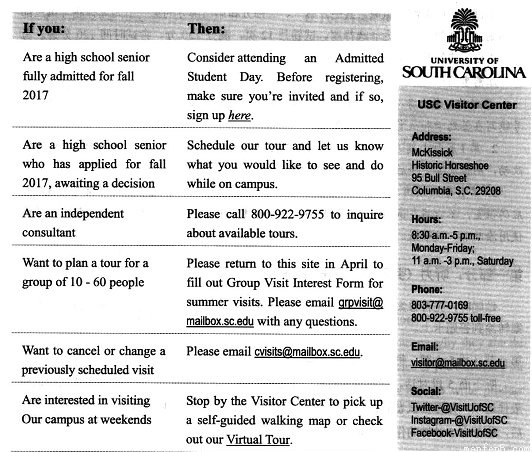题目内容
I still remember the first day of school our professor introduced a little old lady named Rose to us. I was curious about what might have _____ her to be taking on this challenge at her age. “I always _____ having a college education and now I’m getting one!” she told me. I like listening to this “time machine” as she ______ her wisdom and experience with me.
At the end of the term, we ____ Rose to make a speech to our football team. As she began to deliver her _____ speech, she dropped her note card on the _____ . A little embarrassed, she simply said, “I’m sorry. This whiskey is ______ me! I’ll never get my speech back in order so let me just tell you what I know.” As we laughed, she _______ her throat and began, “We do not stop _____ because we are old; we grow old because we stop playing. There are some secrets to staying _______ , being happy, and achieving success. You have to laugh and find _____ every day. Have a dream. When you ______your dreams, you die. We have so many people walking around who are ________ and don’t even know it! There is a huge ______ between growing older and growing up. ______ you are nineteen years old and lie in bed for one full year and don’t do one _______ thing, you will turn twenty years old. That doesn’t ______ any talent or ability. The elderly usually don’t have______ for what they did, but rather for things they did not do.”
One week after graduation, Rose _____ peacefully in her sleep. We will remember the wonderful woman who taught us by example that it’s never too late to be all we can_________ be.
1.A. forced B. motivated C. expected D. supported
2.A. dreamed of B. picked up C. turned down D. gave away
3.A. developed B. compared C. organized D. shared
4.A. carried B. informed C. educated D. invited
5.A. dull B. broken C. prepared D. long
6.A. table B. home C. floor D. office
7.A. saving B. killing C. helping D. hurting
8.A. cured B. showed C. created D. cleared
9.A. playing B. working C. jumping D. resting
10.A. wealthy B. clever C. young D. useful
11.A. courage B. spirit C. respect D. humor
12.A. lose B. treasure C. fail D. live
13.A. crazy B. dead C. alive D. curious
14.A. balance B. difference C. relation D. instruction
15.A. As B. Unless C. If D. Though
16.A. productive B. wasteful C. considerate D. strange
17.A. miss B. seek C. take D. gain
18.A. regrets B. rights C. games D. ideas
19.A. smiled B. died C. cried D. acted
20.A. quickly B. reasonably C. silently D. possibly
A group of cultural calendars, with creative designs, informative content and delicate printing, were hot sellers last year and now posting photos of the calendars has become a new fad on social networks. Many people posted photos of their cultural calendars with their comments to arouse memories of traditional knowledge. Though the cultural calendars are a return to traditions, designers are racking their brains to make the calendars appear more attractive.
| What’s black and white and fun all over? Penguins, of course! These friendly, odd-looking creatures have a universal appeal. Twelve vivid, full color photographs show us various species of penguins surviving in their harsh environment. The Penguins 2016 Wall Calendar features daily grids(格子) with ample room for notes and reminders. U.S. and international holidays are also included. |
| Most of the typeface(字体) for The Palace Museum’s Datebook came from the ancient copies of Kai calligraphy and Li calligraphy, as well as pictures of classic Chinese paintings and artworks. More than 50,000 volumes of it were sold on the November 11 Singles Day, and since then it has remained a best-seller among the art books on JD.com, an online marketplace. |
| The cover for The Red Chamber Dream Calendar was made using a special kind of paper with a red woven design, which symbolizes the joyous and prosperous new year. Inside the datebook, poems, ancient paintings from the classic novel, Dream of the Red Chamber, as well as the inclusion of traditional customs, festivals and solar terms make the datebook seem elegant and informative. |
| Calendar: Beauty of Chinese Characters, however, has 12 themes for the year and tells about the origin of Chinese characters, other interesting information about Hanzi, the name for the characters. By reading the whole book, one can gain a complete knowledge of Hanzi’s history. |
1.The underlined word “fad” in paragraph 1 is closest in meaning to “________”.
A. invention B. content
C. design D. fashion
2.If you are interested in conventional customs, which calendar should you refer to?
A. The Red Chamber Dream Calendar
B. The Palace Museum Datebook
C. Calendar: Beauty of Chinese Characters
D. The Penguins 2016 Wall Calendar
3.According to the description of The Palace Museum’s Datebook, ________.
A. you can find the information about the origin of Chinese characters
B. it has been and remains a best-seller on online marketplaces
C. ancient paintings and poems are included inside the datebook
D. you can appreciate ancient Chinese calligraphy in it


 a call. ____ ,her children couldn’t come to visit her. Worse still, Susan had ____ the mealtime in the hospital. She lay in bed, _____ and silent. Jenny’s daughter offered to buy her some food but she had no appetite ____ .
a call. ____ ,her children couldn’t come to visit her. Worse still, Susan had ____ the mealtime in the hospital. She lay in bed, _____ and silent. Jenny’s daughter offered to buy her some food but she had no appetite ____ .




 Sure enough, the current was now taking them closer to the beach and becoming_____.
Sure enough, the current was now taking them closer to the beach and becoming_____.